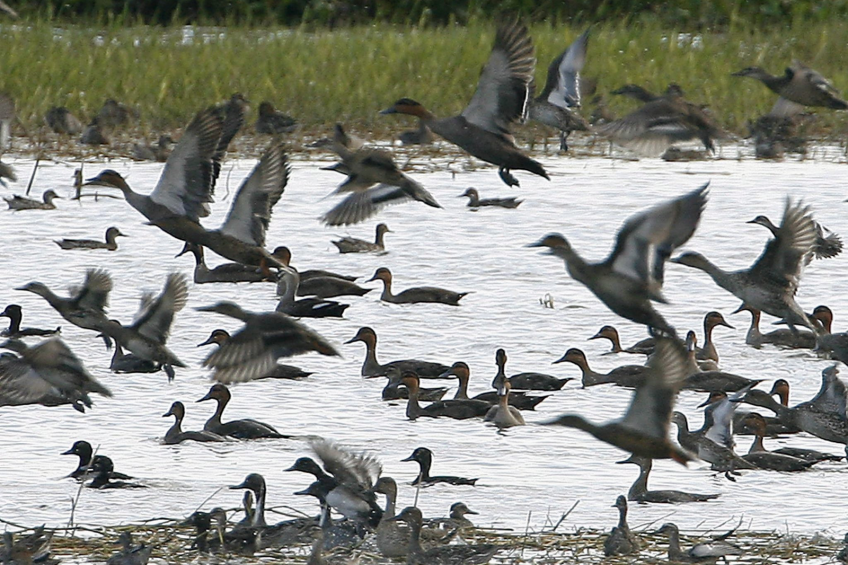Study: “HPAI does not persist in migratory birds”

The H5 avian influenza A virus that devastated North American poultry farms in 2014-15 was initially spread by migratory waterfowl, but evidence suggests such highly pathogenic flu viruses do not persist in wild birds.
While wild ducks and other aquatic birds are known to be natural hosts for low pathogenic flu viruses associated with milder symptoms, the results of this study, led by St. Jude Children’s Research Hospital, indicate that is not the case with the highly pathogenic flu viruses that are associated with more severe illness. The research suggests that wild ducks and other aquatic birds are not an ongoing source of HPAI infection in domestic poultry.
“The findings provide a scientific basis for the decision by officials to use culling and quarantines to stop the 2014-15 outbreak in domestic poultry,” said corresponding author Robert Webster, an emeritus member of the St. Jude Department of Infectious Diseases. “Now, research is needed to identify the mechanism that has evolved in these wild birds to disrupt the perpetuation of highly pathogenic influenza.”
Throat swabs analysed
In this study, researchers analysed throat swabs and other biological samples taken from 22,892 wild ducks and other aquatic birds collected before, during and after a 2014-15 H5 flu outbreak in poultry. The outbreak has been linked to a highly pathogenic H5N8 influenza A virus spread from Asia to North America by migratory waterfowl. The H5N8 virus reassorted, or mixed genes, with other influenza viruses in North American waterfowl and went on to trigger 248 flu outbreaks in commercial and backyard turkey and chicken farms in the US and Canada at a cost of nearly $5 billion.
Officials worked to end the outbreaks by quarantining and eliminating infected poultry. The last confirmed case occurred in June 2015. Officials worried that the highly pathogenic virus would be re-introduced into poultry farms by migratory aquatic birds carrying the virus. But none of the migratory birds included in this analysis were infected with a highly pathogenic flu virus.
The sampling was conducted in Canada, the Mississippi flyway and along the US Atlantic coast by David Stallknecht and Rebecca Poulson of The University of Georgia and Richard Slemons, Andrew Bowman and Jacqueline Nolting from the The Ohio State University in conjunction with Scott Krauss and James Knowles of St. Jude. The sampling was done as part of the federally funded Centers of Excellence for Influenza Research and Surveillance.
Immunity in wild birds
Such viruses have not been identified in any of the more than 100,000 wild birds tested since the flu surveillance sampling began 43 years ago, Webster said. “Existing immunity in wild birds is one of the possible explanations that may explain why highly pathogenic influenza A viruses do not become established in wild bird populations,” he said. “But a more complete understanding of the mechanisms at work would aid efforts to prevent, control and eradicate these dangerous viruses in poultry in other areas of the world.”












